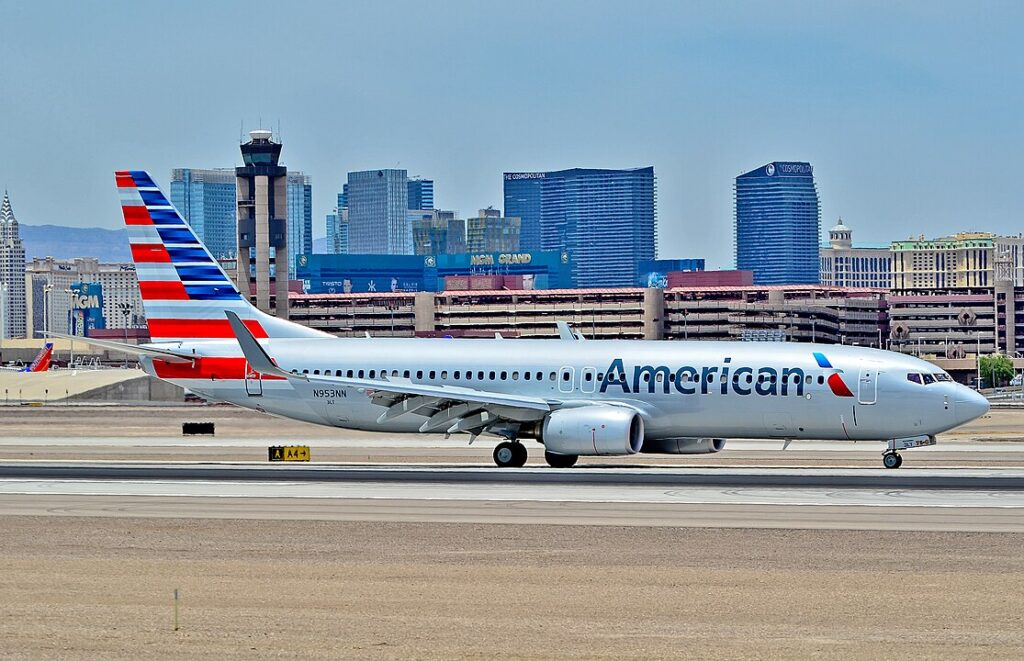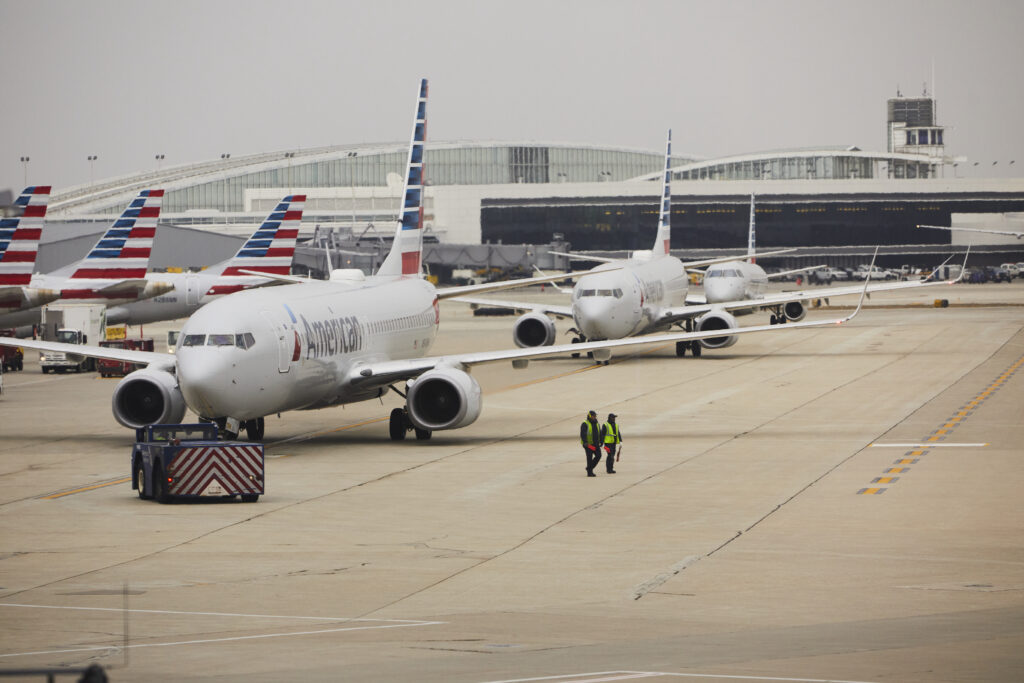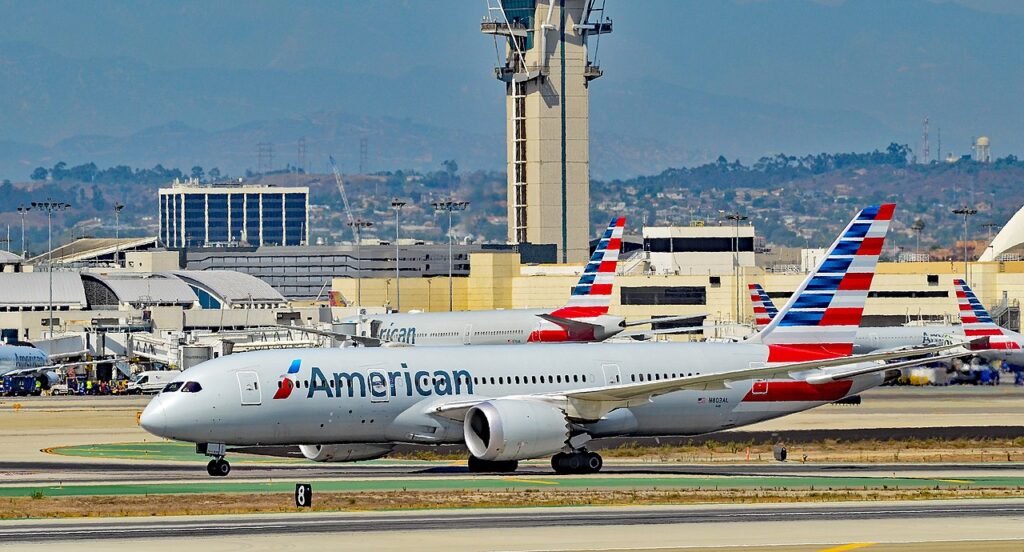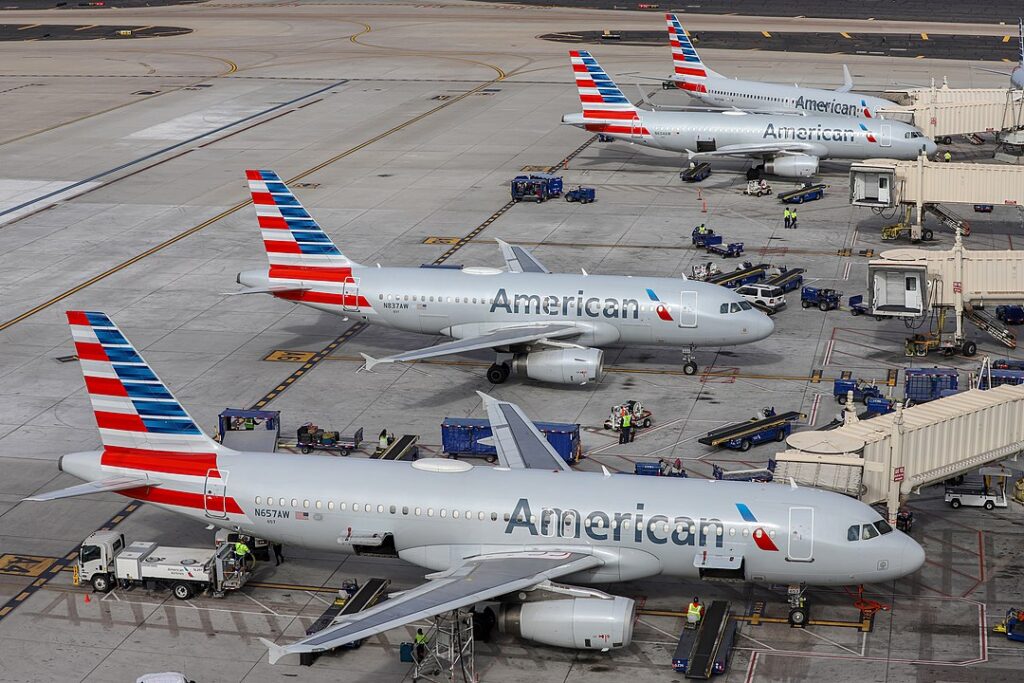NEW YORK- On Thursday evening, American Airlines (AA) Flight AA2818, traveling from New York LaGuardia (LGA) to Dallas-Fort Worth (DFW), faced a significant delay exceeding 5 hours due to adverse weather conditions and the resulting backlog of aircraft attempting to reach their respective destinations.
It’s worth noting that New York LaGuardia Airport often experiences congestion even under normal circumstances.

– cn 33328 / ln 4929, CC BY-SA 2.0, https://commons.wikimedia.org/w/index.php?curid=58272246
American Airlines Passengers Sat on Tarmac for Hours
A passenger expressed their frustration online, sharing their experience of being stuck on the tarmac for five hours.
The passenger’s account didn’t include, but I’ve discovered that the flight did return to the gate at some point, providing those on board with the choice to disembark from the aircraft.
It seems that American Airlines did not violate 14 CFR Part 259 and 49 U.S.C. §§ 42301 in this case. While the flight experienced a delay of over 5 hours, resulting in a challenging experience for passengers, it does not appear to be a situation covered by the law. Interestingly, this highlights an issue within the existing regulations.
Airlines are prohibited from subjecting passengers to lengthy tarmac delays exceeding 3 hours for domestic flights and 4 hours for international flights. Failure to inform customers of their right to deplane and not facilitating this right can result in fines for airlines.

Substantial Fine
American Airlines (AA) recently garnered attention for receiving a substantial fine from the Department of Transportation (DOT) due to tarmac delays. However, some headlines were misleading.
The DOT compiled data on 43 flights involving 5,821 passengers that experienced tarmac delays exceeding 3 hours, potentially incurring fines totaling over $166 million.
Ultimately, the DOT imposed a $4 million fine on the airline, of which only half is required to be paid. This amounts to approximately $352 per passenger, significantly less than the statutory fine of $27,500 per passenger.
While this particular flight did not result in fines exceeding $350 (reflecting the DOT’s leniency), it highlights a more fundamental issue.
While we instruct airlines to return to the gate to allow passengers to disembark during lengthy delays, we are not doing enough to prevent these delays from occurring in the first place. Our current approach appears to be complacent in addressing the root causes of these issues.
In 2023, alarming headlines have emerged regarding near-miss aircraft collisions, air traffic control staffing challenges, and technological glitches. Regrettably, there seems to be a lack of fundamental efforts to enhance air traffic control efficiency and the capacity to respond effectively to severe weather events.

ATC Issues
Airlines often advocate for addressing air traffic control issues by injecting more taxpayer funds into the system. However, there are fundamental concerns, says Viewfromthewing.
- The FAA serves as both an air traffic control services provider and its regulator, effectively resulting in limited oversight. International aviation organizations view this as a problematic safety practice. One potential improvement could involve relocating the air traffic organization to a different agency and establishing external FAA oversight.
- The FAA’s Air Traffic Organization (ATO) faces challenges in recruitment and staffing that have persisted for years. It struggles to offer competitive wage rates, particularly in the Northeast, where controller shortages are most acute. Additionally, the FAA has been resistant to leveraging technology effectively, impeding initiatives like remote towers that render physical proximity irrelevant and enabling more efficient staffing coverage at airports nationwide.
- Despite decades of efforts, the FAA has failed to make substantial upgrades to its technology infrastructure. This issue results from management shortcomings and the limitations of congressional budgeting cycles, which hinder effective long-term investments. Unlike the FAA, non-profit entities like NavCanada can issue bonds and secure long-term funding, financing these costs through user fees imposed on airlines for the services they receive.
When adverse weather conditions strike, flight operations slow down, causing air traffic congestion. However, we should be capable of a much swifter recovery than what is currently achieved.
Delays and flight cancellations have significant financial repercussions for both passengers and airlines.
Stay tuned with us. Further, follow us on social media for the latest updates.
Join us on Telegram Group for the Latest Aviation Updates. Subsequently, follow us on Google News.

